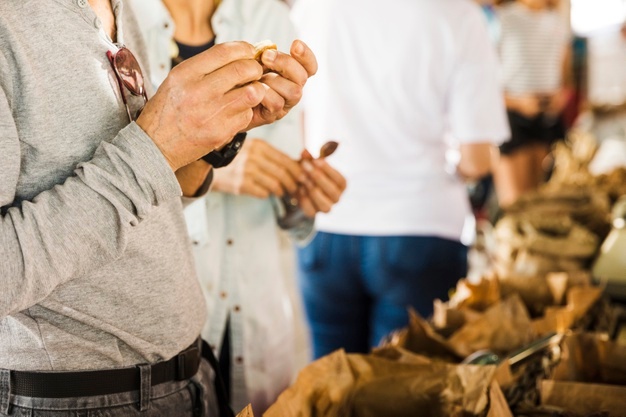We believe that the recent rebound in pig prices may be more seasonal, and the current industry supply does not support a sharp rebound in pig prices.
In the context of the low rebound of pig prices, most breeding entities in the industry will still be in a state of loss, and the trend of capacity de industrialization has not changed. After the early correction, the average market value of breeding stocks has been at a low position, and the market of pig breeding sector may be reversed in the verification of capacity de conversion data in the later stage. Continue to be optimistic about the pig breeding sector, focusing on Muyuan Foods Co.Ltd(002714) , Wens Foodstuff Group Co.Ltd(300498) and Fujian Aonong Biological Technology Group Incorporation Limited(603363) .
How about the current pig price?
We believe that the reason for the rebound in pig prices since April may be more seasonal. Historically, pig prices usually showed a rebound trend in the second quarter. The core reason behind this is that the annual winter epidemic led to a high mortality rate of piglets, resulting in a decline in pig supply in the second quarter. From 2012 to 2021, the average slaughter volume of pigs in the single and second quarter decreased by 28.5% month on month compared with the first quarter. In the later stage, we believe that the current capacity removal range of the industry does not support a sharp rebound in pig prices: 1. At present, the number of newborn pigs in the industry is still high, and the number of newborn pigs in the Ministry of agriculture and rural areas is close to that in the second quarter of 2021. The data of piglet feed output from November 2021 to January 2022 in the early stage also maintained a high level, indicating that the current pig supply is relatively sufficient; 2. Sow feed output also reflects that the current production capacity is still relatively sufficient. From June 2021 to January 2022, the monthly output of sows is about 1.75 million tons, which is close to the historical period from August 2020 to November 2020. The corresponding pig price fluctuates between 12.8 yuan and 15.9 yuan / kg from June 2021 to September 2021 after 10 months; 3. The marketing of group breeding enterprises is still growing rapidly. During the inflection point of the past cycle, the increase in the marketing volume of group enterprises was small, with an average year-on-year increase of less than 20%. In 2022, the marketing volume of Q1 main breeding enterprises increased by 56% year-on-year, and the total year-on-year increase in April was 65%, which was still at a high level; 4. Affected by the epidemic, catering consumption is relatively low. In April 2022, catering revenue decreased by 22.7% year-on-year. Overall, it is expected that the pig price may be in a low shock trend in the later stage.
How to look at the trend of de production capacity in the later stage of the industry and the height of pig price?
Under the background that the pig price may rebound at a low level, the trend of capacity removal in the industry will not change. Historically, the current time point may be similar to the 20132015 cycle. In the 20132015 cycle, the pig price began to rebound in April 2014. At this time, the higher stock of fertile sows decreased by about 8%. From April 2014 to August 2014, the pig price increased by 47%. However, due to the large supply base of the industry, the pig price fell again from September 2014 until the pig cycle began to reverse in March 2015. At this time, the stock of fertile sows decreased by 20%. During the rebound of pig prices from April 2014 to August 2014, the average monthly de stocking rate of fertile sows in the industry still reached 1%. We believe that the trend of industry capacity deregulation in this cycle may not change, mainly due to: 1. The deep loss in the early low pig price period makes the industry cash flow tight, the asset liability ratio of listed enterprises has reached a record high, and the average loss of the pig price industry is still about 175 yuan, and the capacity deregulation will continue; 2. At present, the price of sows in the industry has not followed the rise of the price of pigs and piglets, and remained at 33 yuan / kg month on month, indicating that the enthusiasm of the industry is not high at present; 3. Each round of pig cycle capacity deregulation is accompanied by a seasonal rebound in pig prices. In the short term, the extent of capacity deregulation in the industry may slow down, but it may make the breeding subjects who withdraw prematurely enter the industry again, making the later pig price lower than expected until the industry is pessimistic again and the capacity is greatly deregulated, which is highly beneficial to the later pig price. Historically, the fluctuation range of pig price in pig cycle is large, and it is difficult to stay in the middle or fluctuate slightly for a long time.
How to see the current investment opportunities in the breeding sector?
On the whole, we believe that the de commercialization trend of fertile sows is still downward. After the early correction, the average market value of breeding stocks has been at a low position. The market situation of pig breeding sector may be reversed in the verification of production capacity reduction data in the later stage. At present, there are still great differences in the industry. We continue to be optimistic about the pig breeding sector, focusing on Muyuan Foods Co.Ltd(002714) , Wens Foodstuff Group Co.Ltd(300498) and Fujian Aonong Biological Technology Group Incorporation Limited(603363) .
Risk tips
1. The industry's capacity reduction did not meet expectations;
2. Cash flow risk of breeding enterprises.
